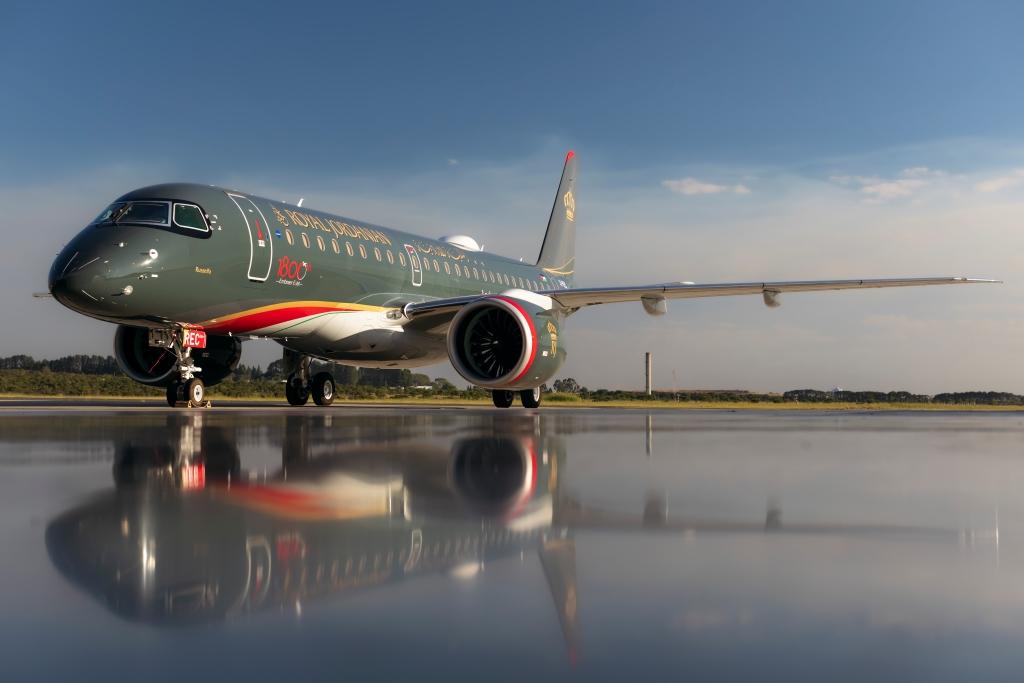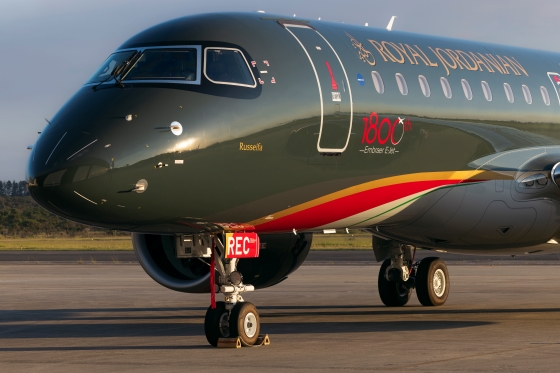1,800 E-Jets. And Counting.

The delivery of Embraer’s 1,800th production E-Jet this month coincides with the 20th anniversary of the aircraft program. The milestone aircraft, an E190-E2, was handed over to Royal Jordanian, one of the early operators of the Brazilian manufacturer’s first-generation family of E-Jets.
Since the inaugural E170 flight by LOT Polish Airlines from Warsaw to Vienna in 2004, some 150 airlines and leasing companies from 76 countries have added E-Jets to their fleets and asset portfolios. The 1,800 aircraft have accumulated 40 million flight hours, 26 million cycles, and carried 2 billion passengers.

The four original E-Jet models - E170, E175, E190, E195 - were designed to tap the capacity gap between 50-seat regional jets and ageing 150-seat narrowbodies, many of which mainline carriers were retiring at the beginning of the 2000s. Embraer filled that 70 to 110-seat sweet spot with its clean-sheet design airplane family. Airlines quickly discovered the mission versatility of the aircraft beyond just short-haul regional applications. They scheduled E-Jets in parallel with mainline services, even replacing narrow-body flights, and opened new routes to help grow their hubs.
E-Jets also brought affordable air travel to new consumers. Brazilian low-fare airline Azul Linhas Aéreas chose the E190 and E195 when it started flying in 2009. It has since become the largest domestic carrier in the country. In the USA, E-Jets have a commanding 80% share of all 75 to 150-seat jets in airline fleets.
Today, the program is still going strong with a new generation of E-Jets, the E2s, which feature a new wing, GTF engines, streamlined aerodynamics, new avionics, new fly-by-wire controls, a new cabin interior, lower fuel burn, reduced noise and emissions, and longer maintenance intervals.

As early-production E-Jets near the end of their operational lives, carriers, like Royal Jordanian, are replacing their first-generation models with E2s. And like they did 20 years ago, new customers are discovering the versatility of the airplanes. Porter Airlines of Canada, for example, routinely flies its growing fleet of E195-E2s on sectors over five hours across North America against larger aircraft from mainline competitors.
The key to the longevity of the E-Jets platform is continual improvement. The most recent enhancements include an optional innovative staggered seat premium cabin layout, 100% SAF compatibility, E2 ETOPS120 certification, and all-cargo version of the E190. The first E190F freighter started test flights on April 9.
With a healthy order backlog and current production rate, the 1,900th E-Jet is on target for delivery next year.